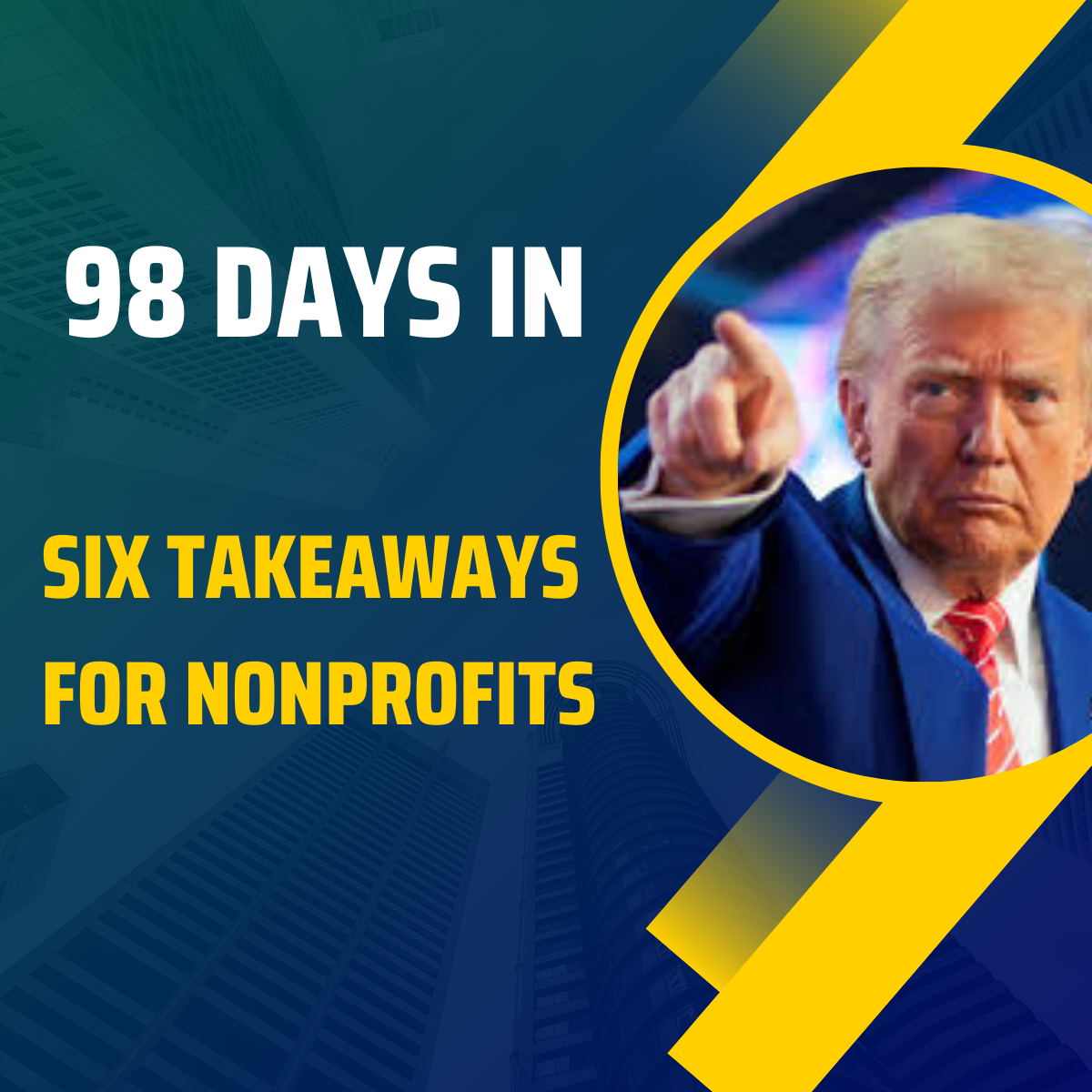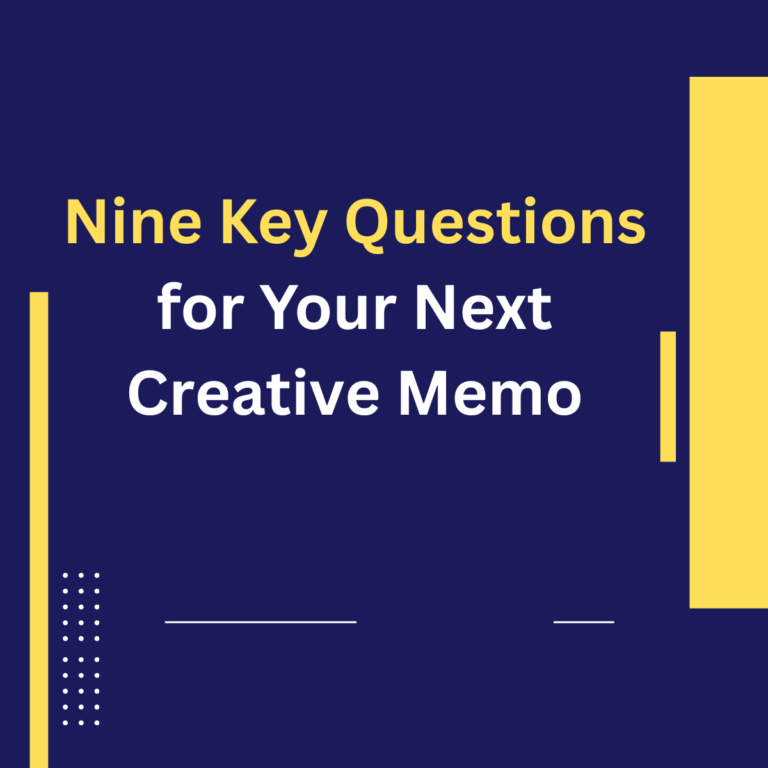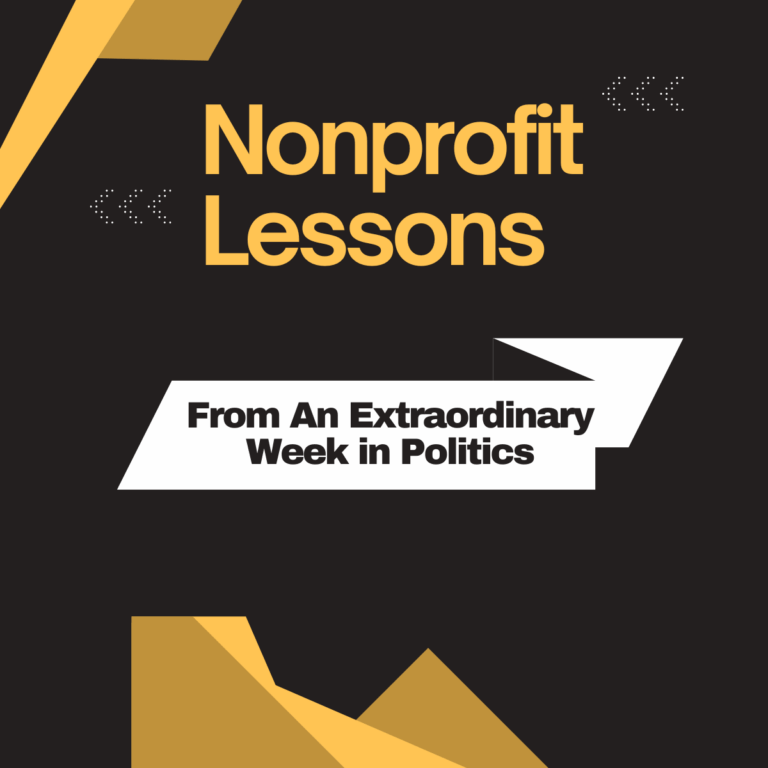In a couple of days, we will hit the 100 days mark – the traditional moment for taking stock of a new presidency. It’s a good time to also take stock of the impact Trump 2.0 is having all across the nonprofit community – and how both political and nonpolitical groups can respond going forward.

When the presidency changes hands from one party to the other, political and advocacy groups always feel the impact. But Trump’s 100 days of cruelty, chaos, and incompetence is reaching far beyond that.
Well-documented, life-saving vaccines are being called into question. Ground-breaking medical research is being disrupted. Universities are facing frontal assaults from the federal government. Legal barriers that shield nonprofits from government interference are being tested. The list goes on and on.
Nonprofits – even those often seen as relatively untouched by “politics” — are being drawn into the fray. Every day that passes, keeping your head down and hoping you can silently ride it out becomes a less defensible response. And “obeying in advance” attempts at appeasement are already beyond justification.

Even apolitical nonprofits untouched by any concrete Trump attack are feeling the impact in two unmistakable ways. Our audiences don’t live in a bubble. When people feeling unnerved and frustrated by what they see happening to our country, it can’t help but affect the emotional energy and sense of priorities they bring to all of their philanthropic efforts.
And, even more directly, Trump’s tariff-driven disruption of the economy and failure to address inflation are either already affecting peoples’ giving behavior or right on the verge of doing so.

Here’s how Washington Post writer Aaron Blake put it in a recent analysis titled “Are Things Falling Apart for Trump?”
“A man who came into office vastly exaggerating the mandate that voters had just given him — and has governed accordingly — appears to have, per public polling, squandered whatever mandate he was given with his brazen actions.”
Blake goes on to cite multiple polls showing Trump’s approval rating underwater by double digits — Pew Research Center (minus-19), Economist-YouGov (-13), Reuters-Ipsos (-11) and now Fox News (-11).
There is hope and opportunity in these numbers. The weaker Trump becomes, the higher the chance we can turn back and resist his most intolerable efforts to disrupt our lives and upend our democracy.
But we have to keep the pressure on. Failure to do so will give Trump a chance to steady the ship and recover his political momentum. Every nonprofit, however political or apolitical their mission, has a role to play pointing our country in a more hopeful direction. Let’s start by addressing the strategies of those drawn, willingly or not, into direct engagement with Trump’s attacks.

It works both ways. Show leadership and courage when that’s hard to do and people will rally to your side. But cower and shrink from the moment and people will remember that for a very long time. We see it in Congress and the fierce grassroots reaction to Senator Schumer giving in to GOP demands on the budget resolution.
We see it in the difference between universities like Columbia and Northwestern seeking to appease Donald Trump and Harvard fighting back. And in the gulf between big law firms seeking deals to avoid Trump’s wrath and those going to court to challenge his retribution-seeking executive orders.
The “lean in, don’t cower” rule applies to nonprofits as well. And Roger Craver in a recent post on his The Agitator platform said it better than I can:
What Fundraisers Need to Learn (Fast)
If you’re a fundraiser, development director, or nonprofit CEO shaking in your sensible loafers right now, let me offer a counterintuitive piece of advice:
Lean in.
Do not tiptoe. Do not self-censor. Do not start sanitizing your mission statements into pablum to avoid scrutiny. You cannot appease someone who sees your very existence as defiance.”

Non-political groups that never speak a word about President Trump have a vital role to play in the current climate. However it unfolds, the ongoing struggle between Trump and his opposition will continue to be contentious and, at many points, frustrating. Audiences, political and apolitical alike, will be eager for a more uplifting and hopeful counterbalance.
Non-political nonprofits can respond to that need by focusing on what I call counter programming to the often bitter political dialogue. Giving people concrete, hopeful projects to invest in both financially and emotionally can be simultaneously successful for the causes in question and uplifting to the nation’s spirit.

I hasten to add that political and advocacy groups shouldn’t leave positive messaging to others. There is, of course, joy and energy in fighting for what we believe in. But, beyond that, it’s vital that we talk to people about what we’re for, not just how much we are against Trump.
This is one of the reasons I keep emphasizing that Democrats must avoid making the 2026 elections a full-on Trump referendum. We’re only painting half a picture if we leave out our vision of a positive future.

It has been a tumultuous 100 days and we have a lot of work ahead of us. But if groups across the nonprofit landscape stay focused and strategic, the next 100 days can be more full of promise.









